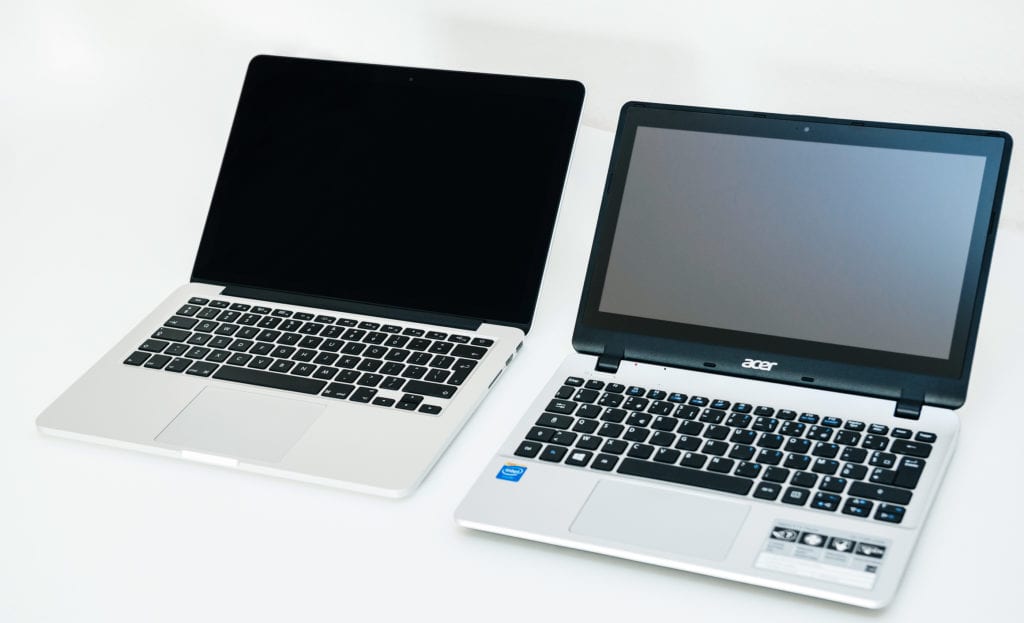
15 years ago, the divide between “Mac” people and “Windows” people was much wider. Artsy types that needed computing power for graphic and video work gravitated to Apple technology, and enterprise and standard business needs tended to end up with Microsoft.
But in recent times, the divide between the two operating systems had become narrower with businesses of all types using either or sometimes both systems in their offices.
As of November 2020, Windows had 76.56% of the global desktop OS market share with OS X at 17.1%.
When you’re designing a productive business network, the operating system you use is important because it’s going to dictate just about everything else, from hardware peripherals to software. Each piece of technology you use, needs to be compatible with your employee computers.
If you don’t think ahead, you can end up wanting to use a particular software but being limited because it’s not compatible with the operating system that your company is using.
Your OS choice will also factor down into mobile device compatibility. If you use Macs, then you’ll want to be using iPhones and iPads when it comes to office mobile technology. Likewise, if you use Windows, Microsoft or Android mobile devices will be more compatible.
Following, are several considerations when choosing between a Microsoft PC or Windows Mac for your business workflows.
Considerations When Choosing Between Windows & Mac
Device Reputation
First, let’s look at the reputation of each device and how it evolved to eliminate some of the negatives.
Apple’s Mac operating system has been known for performance and being easier to use overall. This includes easier to install programs, easier to install printers and other peripherals, with no going through long setup processes.
On the negative side Apple is also known for being much more expensive and having far fewer options when it comes to computers and laptops as well as accessories like a keyboard and mouse.
In recent years, Apple has finally allowed 3rd parties to create things like wireless keyboards for about $25, which is much cheaper than a new Apple brand keyboard at $60+.
Windows has a reputation for being compatible with everything, giving users multiple choices for devices, device manufacturers (Dell, HP, etc.), as well as accessories.
It’s also the most used operating system for a reason, even though it has had a reputation in the past for certain versions being less stable than others.
One drawback when compared to Mac has been its cumbersome installation process for programs and peripherals, however this has become a thing of the past with Windows 10. The newer OS is much more user friendly than prior Windows versions.
Device Quality
Macs are known for quality, and you do pay for that quality in the price. However, pricing isn’t that much different than a high-quality Windows business PC.
Because Apple manufactures their devices, they can better control quality, so you can expect a consistent product every time you purchase a new iMac or MacBook.
Microsoft allows multiple manufacturers to create systems that use the Windows OS. This gives you more options, but also more inconsistency, depending upon which device you choose.
If you don’t choose wisely, you could end up with a PC that’s poorly manufactured and doesn’t last as long as you expect.
Software Compatibility
While just about all major software platforms can be used on both Windows and Mac, this doesn’t mean they’ll give you the same options or performance.
For example, Microsoft 365 has a Mac version, but it’s not as full featured as the Windows version. The reverse can also be the case when trying to use a native Mac program in Windows.
Mac’s productivity tools (Pages, Numbers, Keynote) can convert to Word, Excel, and PowerPoint, though you may lose some formatting. But then, you’re using a two-app workflow just to send file attachments outside your organization that others can open. On the plus side, Mac’s productivity tools come free when you purchase a Mac.
You’ll want to take a hard look at productivity tools that you plan to use and how they actually work in your chosen operating system (not just that they’re compatible) before you choose between Windows and Mac.
Learning Curve
If you’re moving from one environment to the other, there is going to be a learning curve for users. Because of the upgrades in Windows 10 making the OS much easier to use, the technical learning curve in either direction is fairly similar.
However, since so many people use Windows and may have never used a Mac before, you may find more training is needed when moving from Windows to Mac.
Price/Investment
If you’re moving to an Apple environment, then you need to be prepared for higher initial investment costs for computers and laptops, without much wiggle room on the price.
With Windows, you have more pricing options and can purchase equipment that more closely matches user needs. For example, your receptionist’s computer may not need as much processing power as the person that creates your images and video marketing content.
Need Help Choosing the Best Hardware & Software for Your Needs?
Choosing the best technology can be difficult if you don’t have professional guidance. ProdigyTeks can help your Chicago business make the best investment decisions so you’re not hit with any unexpected barriers in the future.
Schedule a free phone consultation today! Call 312-600-8357 or reach us online.



Leave a Reply